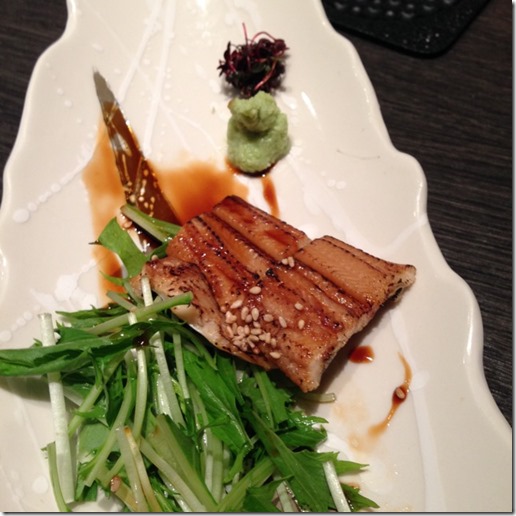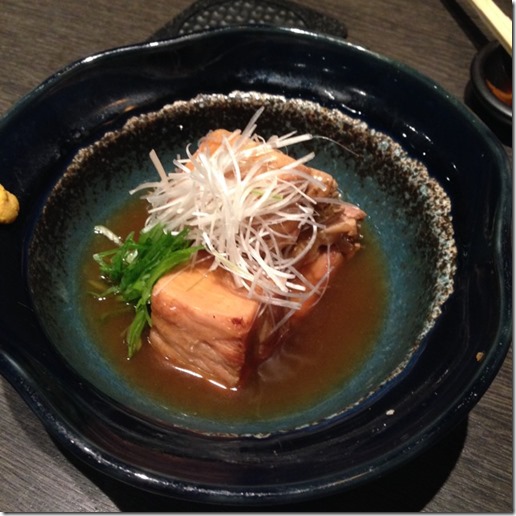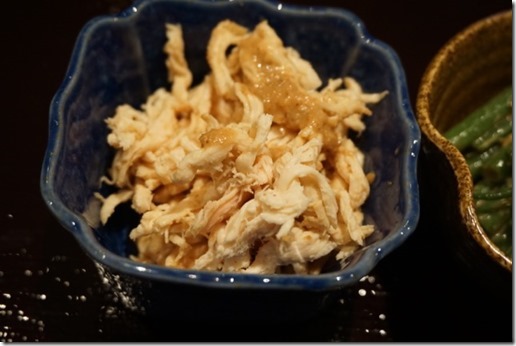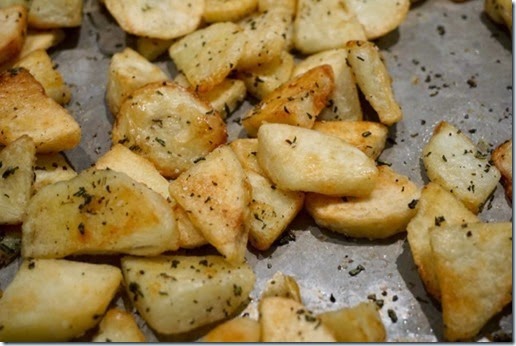
It is located on the basement floor. This was fairly large and a bit (comfortably) down at the heel. We were able to sit side by side enjoying the view of the rest of the restaurant. The clientele that night were of an older generation (not including us this time). Although this was on the basement floor, there was a sort of mezzanine level to the dining room. From our vantage point we could just see the bottom of the tables and a forest of legs. In front of our table, was a bank of large glass front refrigerated cases. They contained quite a collection of sake lined up in large "isshoubin" 一升瓶, magnum bottles containing 1.8 liter or close to 2 quarts. All sake was served in a tall small bottle/carafe which holds 2 go or 360ml. The staff appeared every few minutes to pour the sake from the "mother ship" isshoubin into carafes, for customers, using a funnel kept in the refrigerated case. They filled the carafes in one swift practiced movement (not a drop was spilled). We started with Uragasumi sake from Miyagi 浦霞 純米吟醸.
Once we settled on sake, we looked at the menu. We were presented with two menus, one was a printed "regular menu" which had all the "usual suspects" presented at any Izakaya such as Yakitori. The second menu presented "today's specials". It was a copy of a hand written menu (see below). As usual, we started with sashimi; we chose big eye tuna, kawahagi かわはぎ (with its liver) and kuro-soi Rockfish 黒そい.
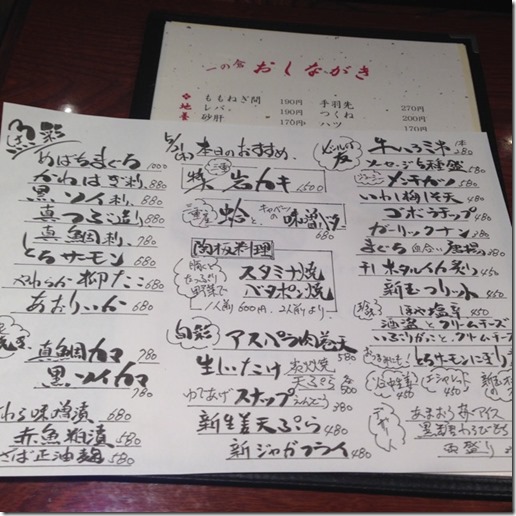
They were served rather nicely as seen below. Clearly this was prepared by somebody with the skills of a chef and done on site (not by a part time guy filling in or shipped from a central-off site location as appears to be the case with some chain izakaya). The tuna was not as good as Hayase’s the night before but, for Big-eye tuna, it was more than OK. I love kawahagi with its liver dissolved in soy sauce as a sauce and this dish reminded me of why I like it so much.

Some portion of the tuna was made it to a small rolls wrapped in nori.
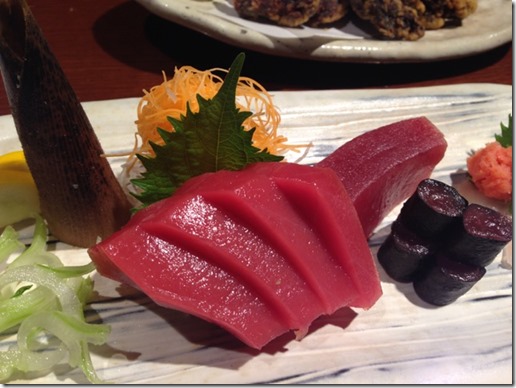
We had grilled semi-dried firefly squid which was very unusual and good. My wife, who is a devotee of firefly squid particularly liked it. We also ordered deep fried "Chiai" of tuna. This is dark red meat of tuna which has a gamey flavor. It was nicely done and this was quite a good dish (behind the combination sashimi in the picture above and a picture below).

We ordered more food such as grilled Kuro-soi kama (grilled Rockfish collar) and some yakitori but I did not take any more pictures.
After finishing our first sake, I found ginjou sake brewed in Nagano 長野 by a winery called Sogga pere et fils ソガペールエフィス in the sake list on the wall. We tasted one of the variations 2 year’s ago at another Izakaya called Honoka 穂のか in Musashi-Koyama 武蔵小山. The sake was brewed as a hobby by the wine maker. The one we chose this time was not great; too simple and not much taste or complexity (since this was the most expensive sake we tried, this was not a good choice). Then, for the final round, we settled on “Yamato shizuku” やまとしずく from Akita 秋田 (which we had 2 years ago at the Akita Izakaya called "Shu-hai" 酒盃.) Turns out this place was pretty good and the bill came in at a very reasonable $86 (10,390yen).





